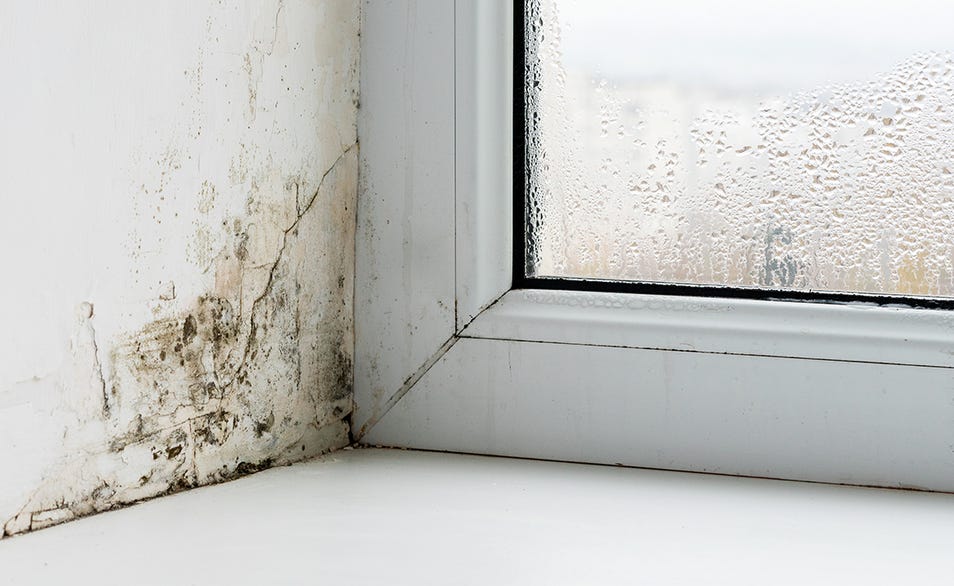Does Bleach Kill Mould?

Does bleach kill mould?
It’s fair to say that mould is often an unwanted guest when it appears in the home. Not only is it unpleasant to look at, but being exposed to black mould can be harmful for our health. That’s why getting rid of this pesky fungus quickly is super important. Here, we’ll look at whether bleach can kill mould effectively, other mould remover options, and how to prevent it from
What causes mould?
Before diving into your mould removal options, it’s important to understand what makes it appear to begin with. Mould can occur in many spots around the home, for different reasons. You might have noticed the shower area has some dark patches. This is because the combination of moisture and warmth makes it a common breeding ground for mould.
How does bleach kill mould?
When it comes to tackling mould issues in our homes, many of us turn to bleach to solve the problem, but does bleach really kill mould? Let's find out and understand the effectiveness of bleach in mould removal.
One common misconception is that bleach is a universal solution for mould removal, including mould on walls. While bleach can be effective in killing mould, it has its limitations. When bleach comes into contact with mould, it breaks down the mould's proteins and enzymes, effectively killing it. The chlorine in bleach disrupts the mould's cellular structure which prevents its growth and spread. However, it may not completely eliminate the underlying cause of mould growth. It's important to identify and address the root cause, such as excessive moisture or poor ventilation to prevent future mould problems.
Cillit Bang Expert Black Mould Remover is very useful when tackling mould as it has 10X more cleaning power vs pure bleach. Let’s delve deeper into the different types of mould and the effectiveness of the cleaner on them, such as mould in showers, black mould, and more.
Does bleach kill mould in the shower?
Showers are a common breeding ground for mould due to the combination of moisture and warmth. Bleach can be a great solution for preventing mould in shower areas. Its powerful disinfectant properties can kill mould spores and prevent their regrowth. So, here’s how you go about cleaning your shower with bleach.
- Start ventilating the area by opening windows or turning on extractor fans—this will help prevent the inhalation of bleach fumes.
- Use Cillit Bang Expert Black Mould Remover, or a bleach solution, on the affected areas with a spray bottle or sponge.
- Allow the bleach to sit for a few minutes then scrub the area using a brush or sponge to remove the mould stains.
- Rinse the area thoroughly with water after cleaning to remove any residual bleach.
- Regular cleaning and good ventilation can help prevent future mould growth.
How long does bleach take to kill mould?
The timeframe for bleach to effectively kill mould can vary depending on several factors:
- The extent of the mould infestation—if the mould growth is minimal, bleach can eliminate it quickly. However, for more severe mould problems, it may take longer for bleach to completely kill the mould.
- The type of surface—non-porous surfaces like tiles or glass are easier to clean and may require less time for bleach to take effect. Alternatively, porous materials such as drywall can absorb mould spores, making it more challenging for bleach to penetrate and eliminate the mould entirely.
- The concentration of the bleach solution—a stronger bleach solution, like Cillit Bang Expert Black Mould Remover, may work faster, but it's important to follow the instructions and guidelines to ensure safe and proper usage. It is recommended to keep the trigger straight and 20cm from the surface. For a basic once-over, let it sit for 5 minutes to kill 99.9% of bacteria and viruses but 15 minutes is necessary to eliminate
black mould. Then simply, clean, rinse and dry the surface.
Does bleach kill black mould?
Black mould is a common concern for many homeowners due to its potential health risks. Also known as Stachybotrys chartarum, it thrives in damp and humid environments. It can release spores that may cause respiratory issues, allergic reactions, and other health problems. When looking for ways to get rid of black mould, bleach can be effective, but it's important to approach its removal with caution.
When using bleach to tackle black mould, it's crucial to take proper safety precautions. Wear protective gloves to avoid direct contact with the mould and its spores. Additionally, ensure there is proper ventilation—open windows and use fans to circulate fresh air.
While bleach can kill black mould on surfaces, it may not penetrate deep into porous materials where the mould could be thriving. If so, help from a professional may be necessary to ensure complete removal.
How to prevent mould regrowth
Bleach can be an effective solution for killing mould, but it’s not the only solution. When preventing mould regrowth ventilating your home is key, and if you’re sensitive to bleach, seek alternative methods.
The timeframe is a key point to consider. How bad is the infestation? What is the surface type and what is the bleach solution? Thorough cleaning and preventive measures are necessary after using bleach to address the underlying cause of mould growth and prevent future issues.
If you're dealing with severe mould problems or have concerns about black mould, seek professional help. They have the expertise and tools to handle such situations effectively. Addressing mould issues promptly and discovering how bleach works is crucial for maintaining a healthy and safe home environment for you and your family.
Sources:
- https://www.healthline.com/health/black-mold-exposure
